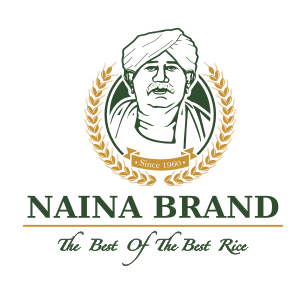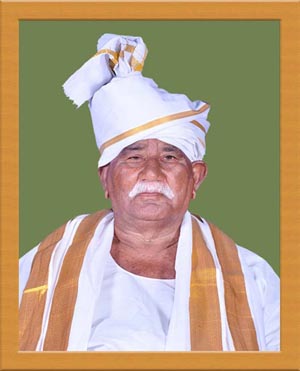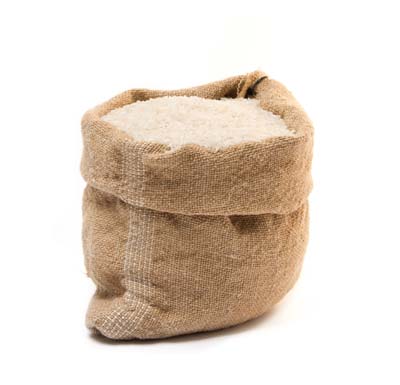



Welcome to
NAINA RICE MILL

The Brand with Trust Genesis of food, the world's mass consumed crop, and natures best gift of food to mankind, is now available to you from the hands of Naina, that spells the quality and trust that you can rely on ever.
The glorious history of Naina Rice Mill dates back to 1960. Our grandfather Mr. Krishnan, the founder of the Mill - affectionately known as Naina by many – had a very humble origin. Being born into a poor family that eked out a living in a small palm leaf-thatched hut, he knew that hard work alone could be his investment to success. He started very early in his life as a rice farmer. As an agriculturist, he had gained an intuitive knowledge about the different forms of rice, their growing conditions, etc. After having acquired the knowledge and mastered the skills of the field over a decade, he went on to join a local mill. He was soon identified to be the lead operator in the milling process because of his superior quality-checking skills. In the 1960s, when there was limited technological support to make moisture-based assessment of paddy, he would so causally identify the best quality grain by just feeling with his hands.
Very soon, he started out his own venture in rice vending business. He used to cycle 15 miles to Vellalagundam - a place of his choice for meeting paddy merchants and procuring high quality grains. Accompanied by his childhood friend Mr. Pachiappan, he would procure 75 kgs of paddy for Rs 25 then. Quality was always his prime concern and he never compromised on it. He used to soak the purchased paddy in mud pots for 15 hours and then boil in brass vessels for an hour. Later the paddy was dried in his 10 x 10 metre hut. The remaining grains, for want of space, had to be dried on the roadside. He used to guard it till the end of the day, with only a small interval of 15 minutes for a modest lunch. In the evening, he used to collect the dried paddy and with the help of a nearby huller, get the bran separated. What resulted after the process was 35 kg of rice.
Ably supported by his wife Kamalam, he used to sieve and ensure that every single stone was removed. Late into the night, the couple would fill the rice in 30 measurable pots, each weighing 270 gms. He would wake up very early, load his bi-cycle with rice pots, pedal to the market before the crack of the dawn, and sell all the 30 pots of rice during the day. Each unit used to be sold for Rs.10 only.
Around the 1970s, Mr. Balakrishnan, with his knowledge of paddy grinding process, joined the team. The trio comprising Krishnan, Pachiyappan and Balakrishnan would purchase 10 sacks of quality paddy (75 kgs each), divide into three shares, and gleefully challenge each other about who would sell it all first. Our Grandfather's produce often got the demand and he used to close sales in just an hour.
Kitchadi Samba, Pulidhi Kar and Matta Kar were some of the rice varieties he specialized in. Over the years, as Kitchadi Sambha sowing came down, he quickly recognized that Ponni with its thin, long grain and unbeatable taste would become a favourite amongst the public. As expected, the market for Ponni rice boomed. With his rich experience, business acumen and people-friendly approach, the public started associating Naina's Rice with quality. Looking at the public reception, Mr Krishnan, a humble man with no business or trading background, got the confidence to start this Naina Rice Mill, way back in 1985. It was built with his hard-earned money of Rs. 3 lakhs. Nestled in the sylvan settings of Ayodhiyapattinam village in Salem District of Tamilnadu, the mill has over the years become a hotspot for rice business.
Naina Rice Mill has seen the evolution of the rice industry in India. Today, the mill can boast of state-of-the-art machinery in the rice business, strong links with key paddy sellers and the trust of a wider circle of consumers. But we know that our success lies in pursuing our grandfather Mr Krishnan's vision - prioritize customer's needs, stick to rigorous quality checks, and serve the best of best rice!

Also knows as Naina
Founder

M.D
First Generation

C.E.O
Second Generation

Admin
Second Generation

A good management for development not only lies in pure businesss, but its the way we support the environment and develop a unified culture to nurture the essence of human strength, morale, knowledge and economics. We keep connected with technologies and agri research centres and update our farmers for the availability of new breed of seeds and techniques. We amalgamate with testing centres for quality of seeds to ensure if it is in par with expected yield and quality. This helps us in maintaining our productivity and promises.

Since from inception, Naina rice mills primary investment is knowledge of paddy procurement, by consideration of various factors and extending alternative geo locations with seasons for purchase of paddy. Season and Soil plays major role in delivering its produce, and along with these there are several factors we scrutinize in selecting the paddy for procurement. Our procurement specialists subject the samples of paddy for a set of scheduled test of chemical, microbiological and residue validations that confirm with our proprietory standards, to enlist the procurement. The carefully selecteds are then moved to our processing storage facilities, which are managed for effective supply of Naina Brand Rice as and when necessary to the market.

Our quality team comprises of eminent and experienced heads in the field of Agriculture Management, Production Management, Resource Management and Scientific advisory personnel coordinating in tandem to ensure the outputs of planning and production is alingned with expected developments. The Chief Member of Naina Rice Mills arranges periodic get-together with the quality team for briefing as well as to encourage the morale of the team and keep the organisation in its right order.


Naina Rice Mills is built upon a single core sloagan in mind, its just "Quality". We had enforced ourselves in every trends and seasons to keep out of deviation and maintain quality in our procurement and produces.
We had done our best foundations and set standard parameters from seeding through ploughing to cultivating, and maintaining across generations. Transforming thought to work is biggest challenge to any individual or corporate, and is same for naina rice mills.
We govern standard protocols and measures to self diagnose and audit our own process and progress in all levels inside the corporate as well as outside the corporate partners of of our developments such as farmers and merchants.
Rather than enforcing strictness, we enforce understanding on quality of work, which directly reciprocates quality of output and quantity too.At Naina Rice mills Social Responsibility is not only bound by corporate ethics, it goes a step beyond to enhance and encourage the quality of life both inside and outside of our corporate boundary. Our growth is just not by our own, but it is a result of the continued efforts given by everyone inside the corporate, farmers, merchants, and the consumer masses.
We share our benefits of our growth with all of them respectively, as well as to the poor and needy. We update our team with knowledge base of technologies and databases that are essential for better yielding seeds, farming methods, quality maintenance and improvement of quantity, and the same is shared with the farmers and support them in monitoring and producing better quality and quantity of paddy, and in such a way it helps improve their quality of life.
At Naina Rice Mills we conduct perodical training, quality maintenance programe and meetings to keep abreast of standards maintained, progress level, improvements required, and encouraging workers morality, which thereby drives the performance of every individual both inside and outside the corporate, and enables collective flow of growth that are needed to be shared back to the society and its development.
The exact origin of rice will perhaps never be known. However, it is certain that domestication of rice ranks as one of the most important developments in history. It has fed more people over a longer period than has any other crop.
Linguistic evidence suggests the early origin of cultivated rice in the Asian arc. In several Asian languages, the general terms for rice and food, or for rice and agriculture, are synonymous.
Recurrent references are made to rice in both Hindu and Buddhist scriptures. In both the religions, rice is used as a major offering to the gods. This proves the longevity of rice as a staple item of the diet.
Archeologists have found evidence that rice was an important food in Mohenjo-Daro as early as 2500 B.C. and in the Yangtze Basin in the late Neolithic period (Chang 1967a). Rice and related farming implements dating back at least 8,000 years were found there and rice cultivation seems to have spread down the rivers over the following 2,000 years.
Pottery shards bearing the imprint of both grains and husks of rice were discovered at the Korat area of Thailand. This is the earliest and most convincing archeological evidence for domestication of rice. These remains date back to at least 4000 B.C.
This evidence not only pushes back the documented origin of cultivated rice but, when viewed in conjunction with plant remains from 10,000 B.C. discovered in Spirit Cave on the Thailand-Myanmar border, suggests that agriculture itself may be older than was previously thought.
Perhaps from diverse beginnings in different parts of Asia, the process of diffusion has carried rice in all directions and today it is cultivated on every continent except Antarctica. Thousands of rice varieties are grown in more than 100 countries.
You sow for good, so will yield and reap good
Rice is the best, The most nutritive and unquestionably the most widespread staple in the world.
Quality is never an accident, its always the result of seamless intelligent effort.
You don't need a silver fork to eat good food
Percent Daily Values are based on a 2.000 calorie diet. Your daily values may be higher or lower depending on your calorie needs
Percent Daily Values are based on a 2.000 calorie diet. Your daily values may be higher or lower depending on your calorie needs
Percent Daily Values are based on a 2.000 calorie diet. Your daily values may be higher or lower depending on your calorie needs
Percent Daily Values are based on a 2.000 calorie diet. Your daily values may be higher or lower depending on your calorie needs
Percent Daily Values are based on a 2.000 calorie diet. Your daily values may be higher or lower depending on your calorie needs



